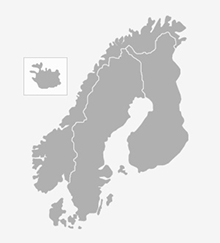It’s commonly said that many car trips are short and could be cycled, but how true is this and who does it apply to? We categorised Finnish residents into distinct groups and assessed the amount of car travel that could be cycled in each with national travel survey data.
Transport systems across in Europe rely heavily on private cars, which contributes to environmental and public health problems such as climate change and sedentary lifestyles. Cycling offers a sustainable and healthy alternative to car use but has a low modal share in Finland and most European countries. In this study, we estimated the number of single-occupancy car trips that could be replaced by cycling in Finland and examined their distribution among different traveller segments. Data from Finland’s 2016 National Travel Survey is used with a machine learning-based segmentation approach.
The analysis is based on data from Finland’s 2016 National Travel Survey. The sample was filtered to include only individuals aged 15 and above who were considered to be able to travel independently and only those who responded during warmer months (May to October) when cycling activity is more common. Respondents reported socio-demographic information, travel habits, as well as trip details for one full day.
Travellers were grouped into traveller segments using a combination of two algorithms: random forest and hierarchical clustering. The random forest was used to classify survey respondents as regular or irregular cyclists based on their sociodemographic characteristics and travel habits. The model produced a distance matrix, which summarised how similarly respondents were characterized by the model regarding their tendency to be regular or irregular cyclists. Hierarchical clustering was used to extract groups from this similarity matrix. A total of eight distinct traveller segments were formed.
After segmentation, we estimated the quantity of cyclable car trips that were travelled in each segment. For a trip to be considered cyclable, it had to be travelled without passengers, be a maximum of five kilometres in length, not be a grocery store or work-related trip (excluding commutes), and be part of a trip chain starting and ending at home. In addition, all other trips in the same trip chain had to meet these criteria as well.
A total of eight traveller segments were formed using the random forest and hierarchical clustering algorithms. These are:
- Car-dependent residents of low-density areas (28.5% of population)
- Low-income retirees and unemployed persons (26.1%)
- Regularly walking motorists (11.9%)
- Public transport-reliant urban workers and students (7.7%)
- Working car-avoiding car owners (6.6%)
- Car-dependent urban residents (8.1%)
- Actively travelling workers and students (8.1%)
- Motorists with restricted car availability (3.1%)
Based on the travel of respondents and above criteria, we estimated that during one cycling season (May to October), approximately 96.8million car trips per season could be cycled. This represents 7% of all car trips and 4% of all trips. The highest potential for shifting car trips to cycling was observed for car-dependent urban residents. Of the segment, around 14% of travel cyclable car trips and such trips account for about 12% of all car trips travelled by them. The figure below shows cyclable car trips relative to the modal share of each segment.

Figure: Proportion of daily trips per capita by travel mode by traveller segment
Replacing car use with cycling would require that an individual encounters such trips frequently to establish a routine. According to the results, most car trips travelled in Finland are not viable to be cycled, and only approximately 5% of travellers reported a cyclable car trip. This could suggest that a small proportion of travellers encounter cyclable car trips often, while the rest almost never encounter them.
The segments formed in the study can help decisionmakers to target specific groups with tailored policies to promote cycling as an alternative to car use. In general, for more car-dependent rural travellers, the promotion of e-bikes and better integration of cycling and public transport can help overcome distance barriers. For more urban travellers, improving cycling infrastructure and restricting car use through pricing measures and the removal of free parking can encourage cycling. For the younger segments already characterised by frequent use of active and public transport, cycling should be ensured to remain a viable option as their stage of life changes.
This work was supported by the Healthy Lifestyles to Boost Sustainable Growth (STYLE) project funded by the Strategic Research Council of Academy of Finland [grant numbers 320401 and 346608].
This article is based on:
Mesimäki, J., Lehtonen, E., & Tuominen, A. (2025). Substituting car trips with cycling in Finland: A traveller segmentation analysis. Transportation Research Part D: Transport and Environment, 141, 104655. https://doi.org/10.1016/j.trd.2025.104655
Contact

Johannes Mesimäki,
johannes.mesimaki@vtt.fi
VTT Technical Research Centre of Finland






Follow us: